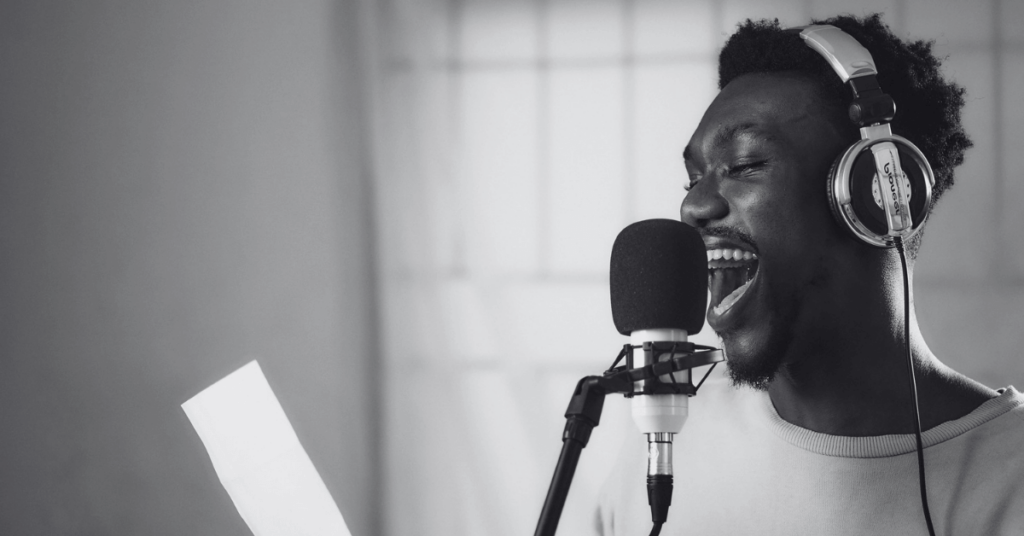We’ve explored various elements of dubbing, voice overs and localisation in previous posts; today, we look at the actual in-depth process of dubbing and the main role players involved.
First of all, let’s consider the content. The type of content we may work with at Content Lab is a foreign language feature film, for instance a Spanish drama.
The client could choose to add subtitles to the movie and/or dub it into English. The former is the cheaper, easier option, while the latter takes a lot more work, but creates a more complete experience, allowing viewers to watch and engage with the on-screen action, hearing the dialogue in their own language, without the need to read the screen.
Let’s say the client chooses the dubbing option and assigns us the project. The first thing we’ll do is watch the film to get an overall idea of what it’s about, as well as an understanding of the tonality, visual language and so on. Then, we’ll get our team of translators onto it – they’ll translate every word and we’ll watch it again, this time with a better understanding of the dialogue and/or voice over used in the content, so that we have a good idea of the meaning of everything.
Following this, the translation team will create the English script, carefully matching not only the meaning, but also ensuring that the rhythm is the same, and that the words chosen will match the mouth movements of the on-screen actors. This is the trickiest part because the translated dialogue needs to sync-up with the time used to pronounce each line. Some original expressions may only need five words in the original language, but could need seven or eight words in English. The translators and scriptwriters will have to find the perfect way to preserve the meaning without sacrificing quality in terms of lip movements syncing with sound.
Once the script is finalised and we are confident that the words will match up to the lip movements and retain the meaning, we need to find the right voice actor for each on-screen character. This is not just a matter of finding the right voice to suit the character, but also an actor who specialises in dubbing. They will understand the importance of syncing, and will be well versed in matching tone and inflection. The voice actors will also watch the original unedited movie, so that they know exactly what they should be aiming for in terms of characterisation and personality. It’s often also necessary that the actors should be a similar age to the on-screen characters they will be playing.
Once our voice actors are cast, it’s time for the recording.
“All the work done so far leads to this point and we have expert sound engineers and creative directors on hand to ensure the process goes smoothly and that the end result is to the client’s quality standards.”
There are two main in-studio processes used for recording. In the first, the actor watches the original footage to get the rhythm of the line before going in for a delivery. The actor will first read the line to themselves during the review, and then delivery it afterward in sync to the picture during the recording phase. In this instance they may be given an audio cue to aid the timing of the start of the line (like three beeps) or they may have to remember the timing from their watch-through. This process gets repeated for every line in the script for the actor’s character. The second method is commonly called ‘streaming’, ‘cueing’ or ‘rhythmo band’. In this scenario the target language dialogue lines run at the bottom of the screen during the actor’s scenes and light up to indicate when the actor needs to perform the line. Helpful for timing. Similar to karaoke.
After recording comes the final mix. This is when the sound engineers replace the original dialogue track with the newly recorded one, and balance these new audio tracks with the M&E (music and effects) tracks from the original content. Once the audio levels have been balanced, each piece of the soundscape sits in its appropriate special location. The technical specifications of client have been met and the movie (content) is ready to be ‘bounced’ into a final file format for quality control reviews. The quality control process generates ‘reverts’ or ‘pick-ups’, which are audio rejections that need to be fixed. Actors may need to re-record a fluffed line for example, or a mix engineer may need to tame the reverb effect on a particular track. The reverts could also be client requested changes.
So it’s only when all the reverts have been corrected and finalised that the dubbing process starts coming to a close. Production staff are then responsible for rendering the final files in the formats required by the client, as well as for delivering the media assets on time.
As you can see, dubbing is much more than just translating dialogue and recording a new voice over. It’s an intricate and complex process that requires a highly specialised and experienced team of dubbing experts – exactly what you’ll find at Content Lab!


